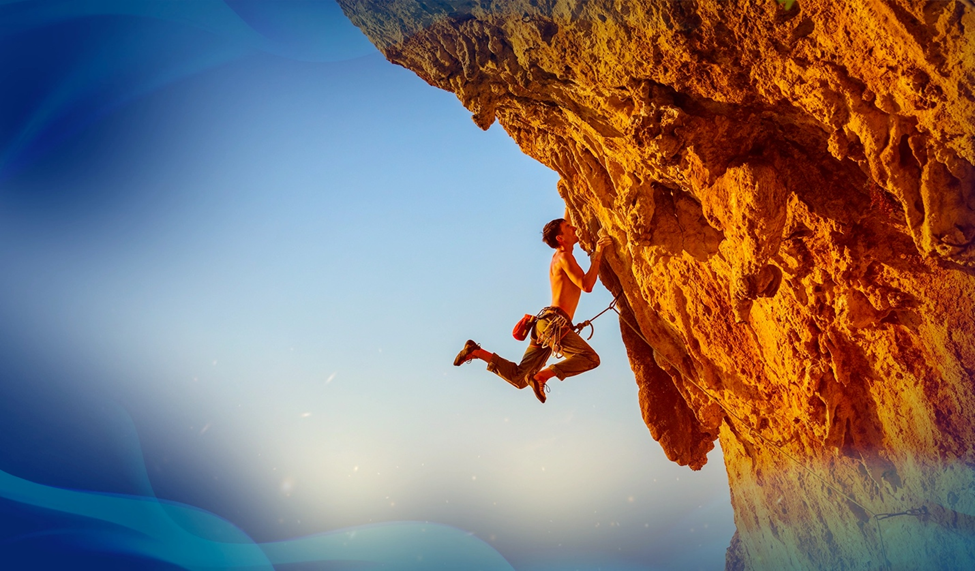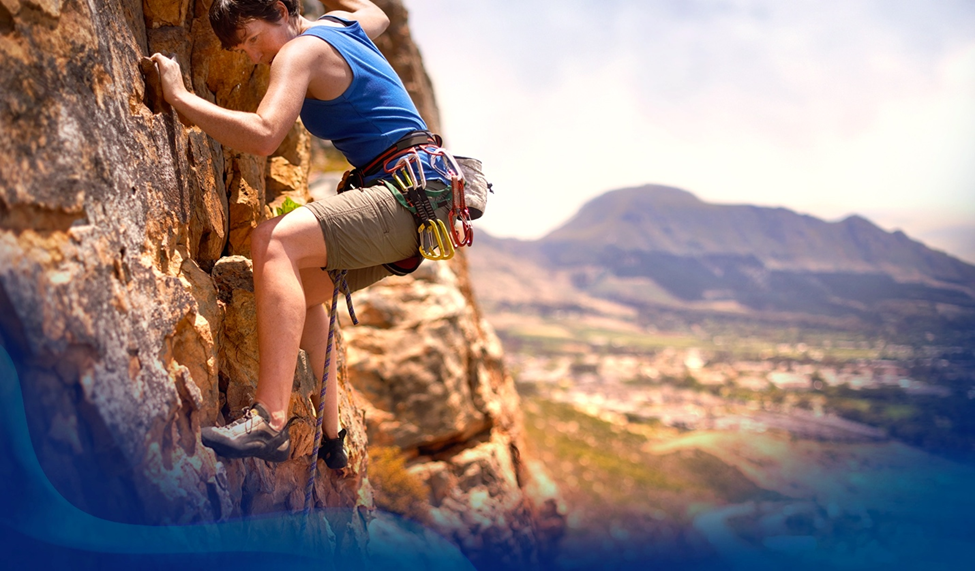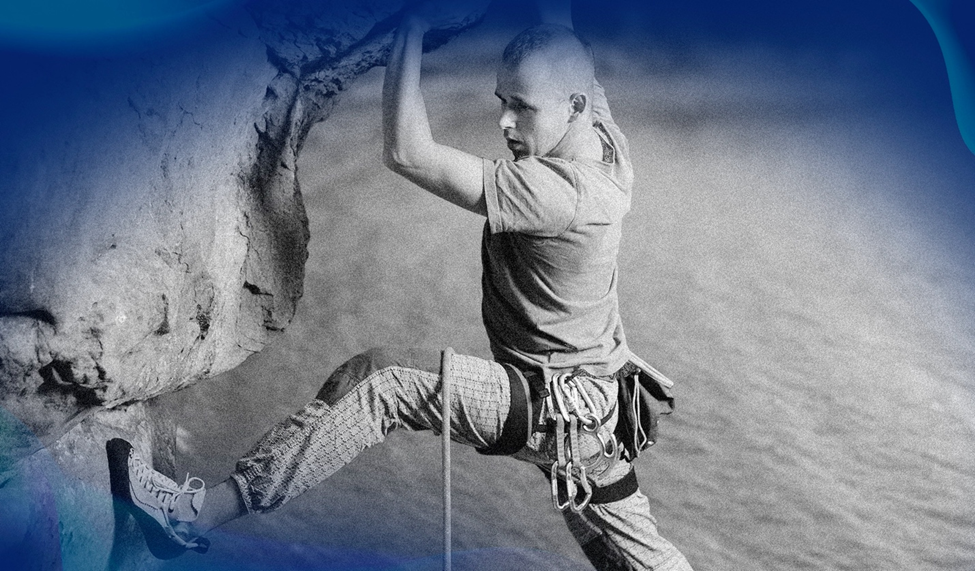
Towering cliffs, daring leaps, gripping adventures (pun intended) — rock climbing is a sport unlike any other.
Thinking of trying your hand at this thrilling activity? Well, there’s something in it for everyone. Whether you’re into indoor or outdoor climbing, short or long, multi-pitch routes, there are many types of rock climbing, each as heart-pumping as the last.
In this guide, we break down everything you need to know before chalking up and scaling to new heights. From historical tidbits to practical tips for beginners, this is your ultimate guide to rock climbing.
Climbing 101: Types of Rock Climbing
Bouldering
One of the simplest and most accessible forms of climbing, bouldering, involves scaling small rock formations or indoor climbing walls. Usually, these walls are no higher than five meters.
Because these climbs are shorter and lower, you don’t need harnesses, ropes, or much other equipment (making it perfect for beginner or low-budget climbers). Instead, you’d typically just lay crash pads below your climbing spot; these thick mats help protect you from injury if you fall.
With that said, don’t be fooled — bouldering still carries its share of risk, especially if you’re doing it outside.
“[Bouldering outside is] more subtle, more technical, the holds are smaller,” says professional boulderer Alex Johnson. “It’s more old-school. [There’s] more body positioning, more standing on your feet.”
Highballing
Think of this as bouldering with a twist. Like bouldering, highballing doesn’t require ropes or harnesses. But the stakes get a little higher…because the climbs do, too.
In this form of rock climbing, you can reach heights of roughly eight meters. From this height, a fall can be more severe, even with crash pads. Highballing is generally reserved for experienced climbers who want to push their mental and physical limits.
Free Soloing
Without question, free soloing is one of the most extreme (and dangerous) types of rock climbing. Free solo climbers scale huge rock faces, sometimes ascending hundreds of meters.
The catch? They do it with zero equipment. No ropes. No harnesses. Nothing.
The climber’s life is in their own hands as they rely entirely on their skill and confidence. Because this form of rock climbing is so high-risk (where a single misstep could be fatal), it should only be attempted by seasoned climbers with years of experience.

Big Wall Climbing
If you’re after something designed to test your endurance and determination, big wall climbing is for you.
Big wall climbs are typically completed on vertical wall faces — much like El Capitan — that are hundreds, if not thousands of meters high. Because they’re so massive, these climbs can take days to complete. Climbers use ropes, harnesses, and other gear to scale the wall in sections.
Now, you may be wondering: how can a climb take days? Where do they rest and refuel? Oftentimes, climbers will set up camp on the side of the wall on “portaledges”, which are basically hanging tents. They’ll sleep, eat, and hydrate hundreds (or thousands) of feet off the ground until they’re ready to resume their climb.
Trad Climbing
Short for “traditional climbing”, trad climbing involves using your own gear to make your way up climbing walls. You place your own nuts, cams, and other equipment into holes in the rock to fasten yourself to the wall as you climb higher.
Trad climbing requires a good bit of experience because you need to make on-the-fly decisions about where to place your gear.
Sport Climbing
Sport climbing is very similar to trad climbing but slightly easier, thanks to the pre-placed bolts along the rock wall. This means you don’t have to decide where you’re going to clip in; instead, you can just make your way along the predetermined path.
But make no mistake: sport climbing isn’t necessarily easy. Routes vary in difficulty, so you’ll still have plenty of chances to challenge yourself.
Scaling Through Time: The History of Rock Climbing
Although rock climbing has evolved a lot over the years, its root values of exploration and limit-defying fun have stayed the same.
Rock climbing can be traced to China and Europe, with the earliest instances of the sport taking place in the late 1800s. At this time, climbers used things like wooden pegs and hemp ropes to complete their climbs. That said, as time wore on, the equipment became more innovative.
In the 1930s, expansion bolts were introduced, allowing climbers to fasten themselves to rock faces. This was a game changer, greatly increasing the safety of the sport.
Over the next few decades, rock climbing would take the world by storm. By the 1970s, indoor climbing gyms were popping up around the globe. In 2021, sport climbing made its official debut at the Tokyo Olympic Games.

Getting Started: 3 Rock Climbing Tips for Beginners
Ready to experience the adrenaline of rock climbing yourself? Here are three simple (but crucial) tips for beginners:
1. Start with the Right Gear
To get started, you won’t need to invest in a ton of equipment. But grabbing some essentials will make a huge difference.
Start by getting a pair of climbing shoes; these are designed to give you a better grip on the rock or climbing wall. You’ll also want to pick up some chalk, which will keep your hands dry and improve your grip. If you’re planning to climb outside, be sure to buy a harness and a belay device. If you’re heading to a climbing gym, don’t worry about grabbing these yet — most gyms will provide them for you.
2. Focus on Technique, Not Strength
When you’re getting started, good technique will carry you further than body strength. Use your legs to push yourself up instead of relying only on your arms to pull. Remember to keep your entire body as close to the wall as possible.
Keep an eye on experienced climbers to see how they move, where they place their hands and feet, and more. A little sly spying will teach you more about the sport than you might have thought.
3. Get Your Mind Right
In many ways, rock climbing is just as much a mental challenge as it is a physical one. Start at lower heights and gradually work your way up to higher climbs and more complex routes.
Remember: it’s normal to feel uneasy, especially during the first few climbs. Stay calm, breathe deeply, and take your time. Much like your skill, your confidence will grow with practice.
POV of An Expert
From indoor bouldering to free soloing enormous cliffs, there’s endless variety and excitement in this sport.
But don’t take our word for it. Take it from pro boulderer Alex Johnson, who recently sat down with the host of The Team Ignition Show, Leticia Bufoni. Together, the two explored Alex’s incredible climbing career and what makes this sport so special.



